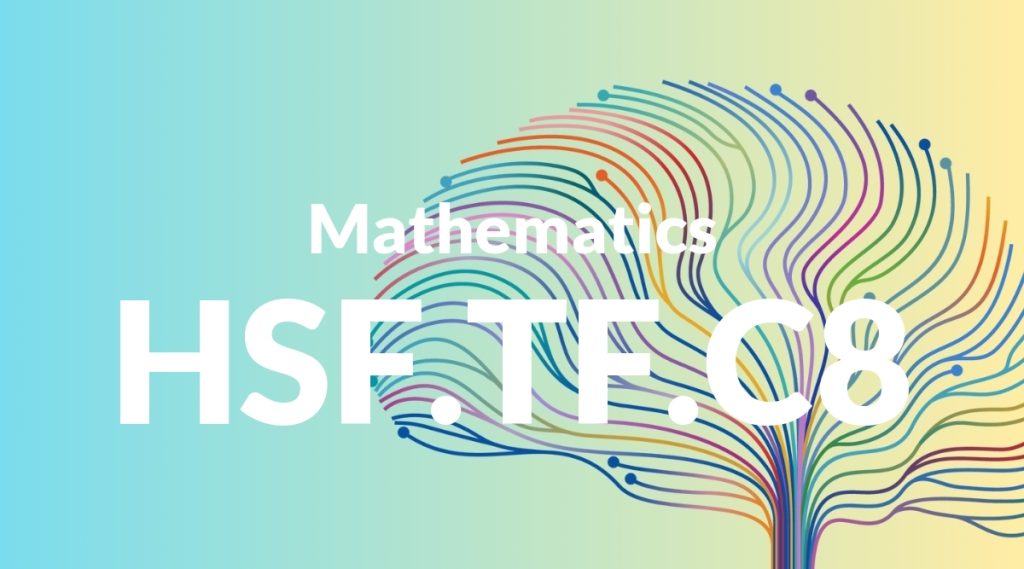Standard: HSF.TF.C8 – Prove the Pythagorean identity sin²(θ) + cos²(θ) = 1 and use it to find sin(θ), cos(θ), or tan(θ) given sin(θ), cos(θ), or tan(θ) and the quadrant of the angle.
Grade level: High School: Functions
Subject: Mathematics
Domain: Trigonometric Functions
Teacher Overview
This standard focuses on proving the Pythagorean identity sin²(θ) + cos²(θ) = 1, a fundamental concept in trigonometry that serves as the basis for many advanced topics. Mastery of this identity allows students to solve trigonometric equations and understand the relationships between trigonometric functions. Students should have a solid understanding of basic trigonometric functions, the unit circle, and the properties of right triangles.
After mastering this standard, students will be equipped to tackle more complex trigonometric identities, inverse trigonometric functions, and their applications in calculus and real-world scenarios.
Common Misconception 1
A common misconception is that the identity sin²(θ) + cos²(θ) = 1 only applies to specific angles, which is incorrect because the identity is universally true for all angles.
Intervention 1
To address this misconception, provide various examples with different angles, showing that the identity holds true in each case.
Common Misconception 2
Another misconception is that the Pythagorean identity can be applied without considering the quadrant of the angle. This is incorrect because the signs of sine and cosine vary depending on the quadrant.
Intervention 2
Use visual aids like the unit circle to highlight the importance of the quadrant and demonstrate how the signs of sine and cosine change.
Prerequisite Knowledge
Students should be familiar with basic trigonometric functions (sine, cosine, tangent), the unit circle, and the fundamental properties of right triangles.
Subsequent Knowledge
After mastering this standard, students will be able to explore more complex trigonometric identities and equations, delve into inverse trigonometric functions, and apply these concepts to calculus and real-world problem-solving.
Instructional Activities
- Interactive unit circle exploration
- Hands-on activities with trigonometric function graphs
- Problem-solving sessions with real-world applications
- Peer teaching exercises on the Pythagorean identity
- Using technology tools to visualize trigonometric relationships




